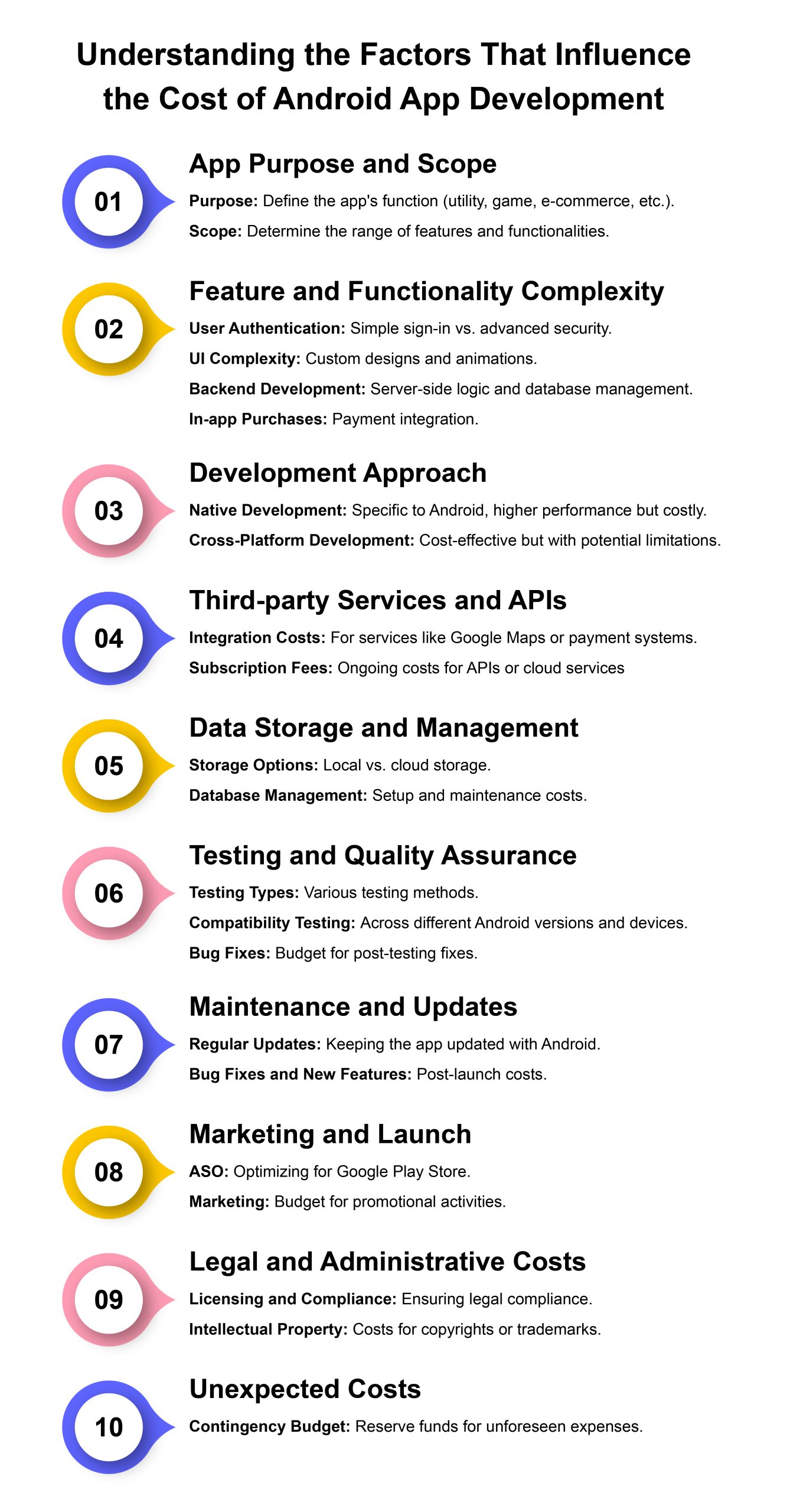Let's Get You Started

Let's Get You Started




If you’ve landed here, chances are you’re considering diving into the exciting journey of having an Android app. Whether you’re a startup founder, a business leader, or a tech enthusiast, understanding the cost landscape is crucial. So, let’s discover the mystery behind the average cost of Android app development, keeping it as easy as possible to understand!
Before we dive into the numbers, it’s essential to understand the factors that play a significant role in determining the cost of developing an Android app.

Alright, let’s talk numbers. The cost of developing an Android app can vary dramatically.
Remember, these are ballpark figures. The actual cost can swing based on your specific requirements.
An essential aspect to consider is the payment model you’ll opt for. This decision can significantly impact not only your budget but also the working dynamics with your chosen development team. Let’s check out the common payment models in the industry of app development, dissecting their pros and cons to help you make an informed decision.
Selecting the right payment model is a nuanced decision and depends on several factors like project scope, budget constraints, and your tolerance for risk. For projects with a well-defined scope and limited flexibility, a fixed price model might be ideal. On the other hand, if your project is exploratory or likely to evolve, consider an hourly rate or hybrid model.
Always discuss these models in detail with your development partner to understand their implications fully. A clear mutual understanding of the chosen model is crucial for a successful and harmonious development process.
Let’s lay it out in a more digestible format:
| Factor | Low-Cost Impact ($) | High-Cost Impact ($) |
| Basic Functionality | 5,000 | 20,000 |
| Advanced Features | 20,000 | 50,000 |
| High-End Customization | 50,000 | 100,000+ |
| Ongoing Maintenance | 500/month | 5,000/month |
When selecting a mobile app development company, it’s a balance between cost and quality. Consider:
Beyond the development costs, there are other expenses to consider:
Post-launch, your app needs care. Regular updates, bug fixes, and possibly adding new features are part of the journey. Budget for ongoing maintenance to keep your app in top shape.
When can I get an Android app?
It can range from a few weeks for a simple app to several months for a complex one.
Can I reduce the development cost by using cross-platform tools?
Yes, tools like Flutter or React Native can reduce costs by using a single codebase for both Android and iOS.
What is the yearly cost of app maintenance?
Typically, expect to spend around 15-20% of the initial development cost annually on maintenance.
Does the choice of programming language affect the cost?
Not significantly, but some languages and frameworks can speed up development, potentially reducing costs.
Can I begin with a simple app and add functionality later?
Absolutely! Starting with an MVP and scaling up based on user feedback is a smart strategy.
Developing an Android app is like going on an exciting journey. It requires meticulous preparation, familiarity with the associated expenses, and the selection of suitable associates. Your expectations for costs and how to effectively traverse the process should have improved by this point.
Remember, each app is unique, and so is its journey. Be prepared for some twists and turns, but with the right approach, your Android app can be a true success story.

Welcome to Appxide, where innovation meets utility in the world of app development. Our mission is to craft cutting-edge digital solutions that simplify lives and spark connections. With a diverse portfolio that traverses multiple sectors, we are committed to excellence and user-centric design. Stay tuned to our blog for the latest in tech, insights, and the stories behind our projects. Dive into the future with us – where every app we create is a step towards the extraordinary.